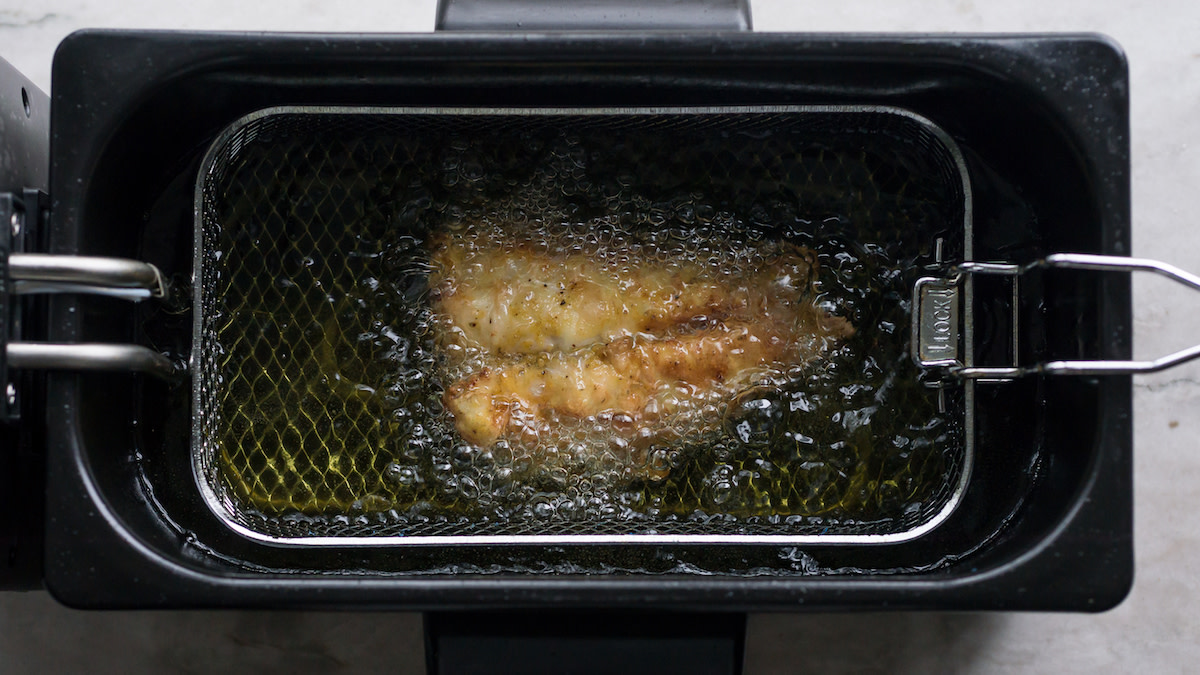
There are few textures more satisfying than the crunch of crispy fried fish. The deep frying process is simple, but if there is one way to ruin a good fish fry, it’s choosing the wrong frying oil.
Two things to keep in mind when picking the best deep fryer oil are smoke point and flavor. The smoke point of an oil is the temperature at which the oil begins to break down and start burning. This causes oils to become carcinogenic and taste bitter or burnt. When it comes to flavor, it’s often best to choose an oil with a neutral taste. Some oils have distinct flavors that can impart unwanted taste into your food.
To achieve the perfect fry, foods must be fried at high temperatures—ideally between 350 and 375 degrees. Lower temperatures result in soggy food and higher temperatures will burn it. The smoke point is essential, so be sure to choose an oil with a smoke point higher than 375 degrees.
Many oils with a high smoke point are made through a refining process. After a nut or seed’s oil is extracted, it is processed to remove volatile compounds that can lower the smoke point, impart flavor, or reduce shelf life. Unrefined oils, often labeled raw or virgin, are kept in a pure state to retain beneficial nutrients.
Unfortunately, some of the best oils for frying are high in saturated fats, which aren’t considered heart-healthy. While it might be tempting to try and take the healthy route by choosing extra virgin olive oil, it’s not great for frying due to its low smoke point.
Best Oils for Deep Frying
Vegetable, canola, and grapeseed oil are widely considered the best choices. They have roughly a 400-degree smoke point, neutral flavor, and are very affordable.
Peanut oil has a very high smoke point at 450 degrees. It has a slightly nutty taste, though many consider it neutral. The downside to peanut oil is the high saturated fat content.
Refined coconut oil has a neutral flavor and a high smoke point of 450 degrees. Although it has high saturated fat, it’s composed of medium-chain triglycerides (MCT). Though widely debated, some health experts claim that MCT helps the body raise HDL, the good cholesterol. Refined coconut oil can be purchased in bulk and is great for frying and making confit goose legs.
Honorable Mentions
Beef tallow, bear fat, schmaltz, and pork lard have smoke points ranging between 375 and 400 degrees, but can impart savory or meaty flavors. This isn’t a bad thing—venison pasties fried in bear fat are awesome! Just be conscious of this factor and how it will infuse your fried food with those specific tastes.
Similarly, sesame oil has a smoke point of 425 but comes with a strong nutty flavor. Avocado oil is neutral tasting, has a very high smoke point, and is ultimately the healthiest choice. Unfortunately, it is expensive, and better suited for shallow frying.
Worst Oils for Deep Frying
As previously mentioned, unrefined oils with a low smoke point are poor choices. Skip the pure coconut oil, extra virgin olive oil, walnut oil, and shortening. Butter is also a no-go because it has milk proteins that will burn. Save that for low-heat applications or for making salad dressings.
Now that you know which oils are best for frying, it’s time to whip up some of our favorite recipes. We love just about everything fried, from venison tongues to cottontail rabbit legs. Venison croquettes make an excellent appetizer and the whole family will surely approve of Turk-Fil-A nuggets.






